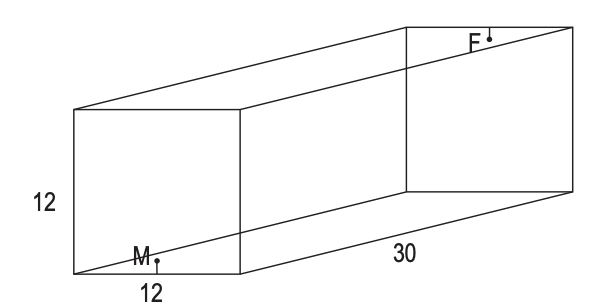Two Ants
A rectangular box has dimensions 12´12´30 (cm) in which dwell two ants, a male and a female. The male ant is sitting on one of the ends halfway between the sides and 1 cm from the floor; the female is similarly positions on the other end but 1 cm from the ceiling. How far is the female from the male?
This is a great grade 10 problem. The students will soon think of the trick of opening the box out to make it two dimensional on which shortest paths will be straight lines.
Now distance is always measured with respect to a “metric,” and here the metric is distance measured along the surface of the box. That is, the ants cannot fly, so that any path from the male to the female must stay on the box. We are asking for the shortest such path.
One obvious path is the “endwall-floor-endwall” route which runs 1 cm down to the floor, across the floor, and up the opposite end to the female: a total distance of 1+30+11 = 42 feet. The question is, are there shorter paths? Can we get a shorter route by using the sides? We throw this question out to the class.
In fact, we often get a “proof” that we can’t do better than 42. To get over to the side wall requires at least 6 cm, and then to get to the opposite end requires at least 30 cm, and then at least 6 cm must again be used to get over to the female. That’s 42 cm right there, and we haven’t accounted for the change in height.
Curriculum Expectations
Use of Mathematical Processes
Analytic Geometry
Trigonometry



